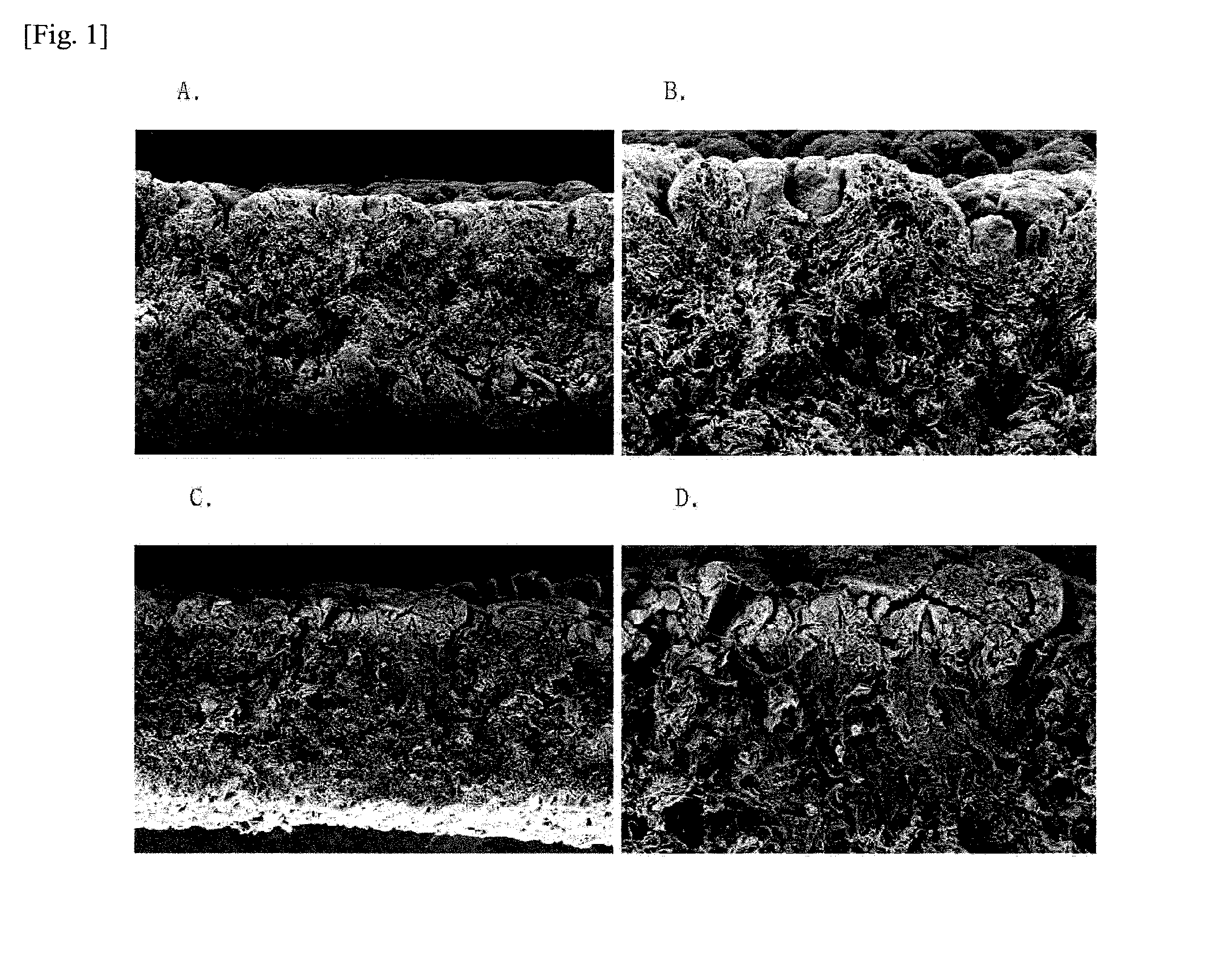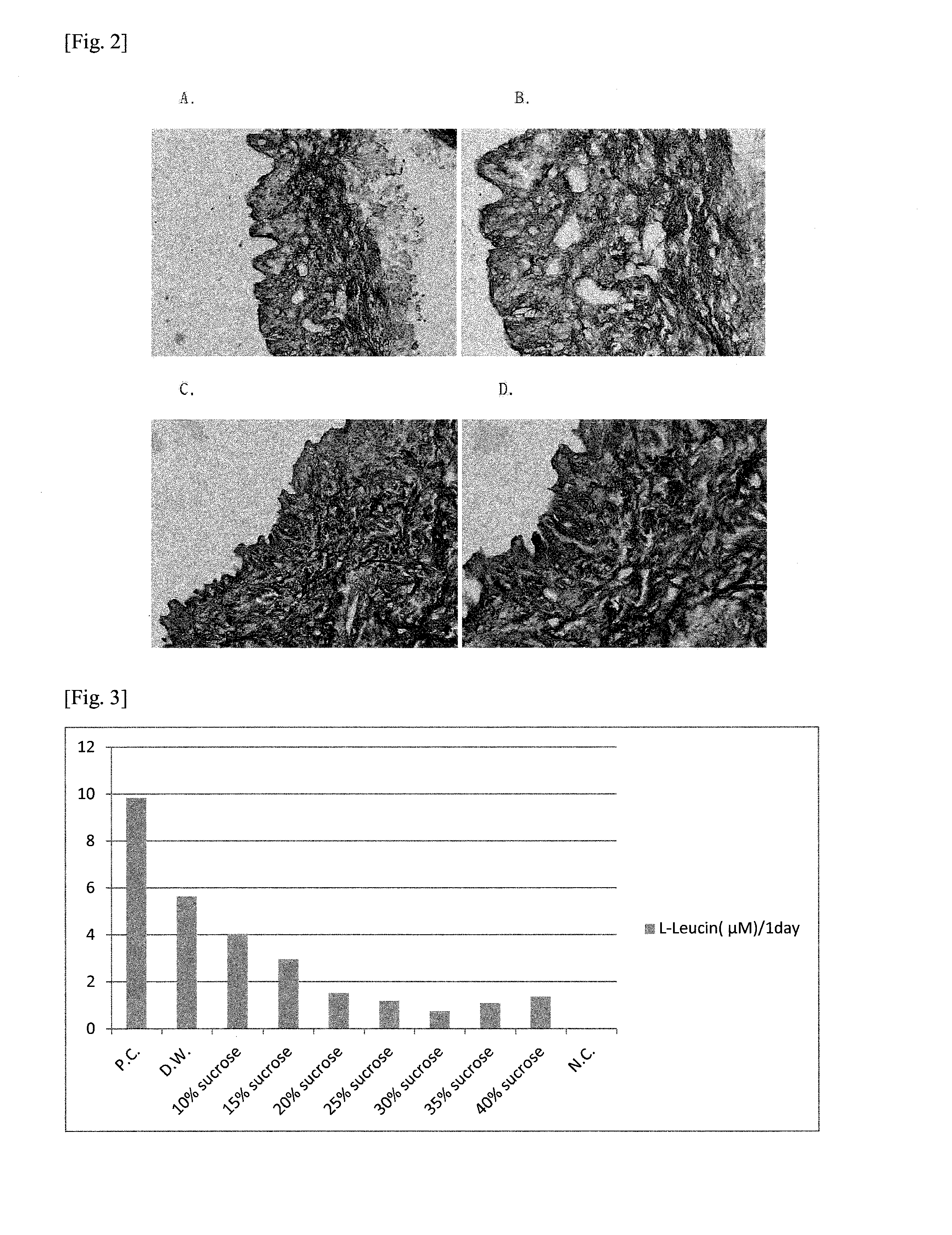Production Method For Cryopreserved Acellular Dermal Matrix, And Cryopreserved Acellular Dermal Matrix Produced Thereby
a technology of which is applied in the field of cryopreserved acellular dermal matrix prepared therefrom, can solve the problems of increasing patient pain, skin tissue may be obtained, and the scar in the harvesting region can leave a new scar
- Summary
- Abstract
- Description
- Claims
- Application Information
AI Technical Summary
Benefits of technology
Problems solved by technology
Method used
Image
Examples
example
[0026]Cryopreserved skin was prepared with pig skin according to the following steps.
[0027](1) Pig skin was washed with saline solution.
[0028](2) The pig skin was cut at the size of 5×10 cm2.
[0029](3) The pig skin was immersed in 1M NaCl (Sigma, USA) solution.
[0030](4) A 38° C. incubator (P-039, CoreTech, Korea) was prepared.
[0031](5) The reaction of the pig skin immersed in 1M NaCl (Sigma, USA) solution was carried out in the 38° C. incubator with stirring for about 6 to 24 hours.
[0032](6) Epidermis was removed by using forceps.
[0033](7) The dermis from which epidermis has been removed was washed with phosphate buffered saline (pH 7.2, Gibco, USA).
[0034](8) The washed dermis was immersed in 0.1% SDS and reacted with stirring at room temperature for 1 hour to remove cells from the dermis.
[0035](9) The dermis from which cells have been removed was washed with phosphate buffered saline.
[0036](10) Glycerol (Sigma, USA) and phosphate buffered saline were mixed in the weight ratio of 1:9...
experimental example 1
Histological Examination
[0062]The pig skins prepared according to the above Example and Comparative Example were stained with H & E (hematoxylin & eosin) as follows:
[0063](1) A paraffin block was cut with 4 μm thickness and dried to obtain a paraffin section.
[0064](2) For deparaffinization, after conducting xylene treatment of 5 minutes three times, 100% ethanol treatment of 2 minutes two times, 90% ethanol treatment of 1 minute one time, 80% ethanol treatment of 1 minute one time and 70% ethanol treatment of 1 minute one time, the section was rinsed in running water for 10 minutes.
[0065](3) After staining with hematoxylin for 10 minutes, the section was rinsed in running water for 3 minutes. Then, after staining with eosin for 10 minutes, the section was rinsed in running water until no eosin was detected in the rinse water. After conducting 70% ethanol treatment of 1 second ten times, 80% ethanol treatment of 1 second ten times, 90% ethanol treatment of 1 second ten times, 100% e...
experimental example 2
Measurement of Degradability by Collagenase
[0075]To evaluate the stability of acellular dermal matrix according to the concentration of sucrose, the degradability by collagenase was measured as follows:
[0076](1) 25 mg of sample was added to 5 mM TES buffer containing 0.36 mM calcium chloride and mixed well.
[0077](2) 0.1 ml of collagenase (0.1 mg / ml) was added to the sample of step (1) and incubated at 37° C. for one day with stirring.
[0078](3) 4.0 mM L-leucine standard solution was serially diluted and treated with ninhydrin color reagent. A standard curve was prepared by measuring absorbance at 570 nm (VERSA max, Molecular Device, USA).
[0079](4) The sample of step (2) was treated with ninhydrin color reagent and then absorbance at 570 nm was measured.
[0080](5) The amount of released L-leucine from each sample was calculated by using the L-leucine standard curve of step (3).
[0081]The above calculated L-leucine release amount is represented in FIG. 3. As can be seen from FIG. 3, a c...
PUM
 Login to View More
Login to View More Abstract
Description
Claims
Application Information
 Login to View More
Login to View More - R&D
- Intellectual Property
- Life Sciences
- Materials
- Tech Scout
- Unparalleled Data Quality
- Higher Quality Content
- 60% Fewer Hallucinations
Browse by: Latest US Patents, China's latest patents, Technical Efficacy Thesaurus, Application Domain, Technology Topic, Popular Technical Reports.
© 2025 PatSnap. All rights reserved.Legal|Privacy policy|Modern Slavery Act Transparency Statement|Sitemap|About US| Contact US: help@patsnap.com


